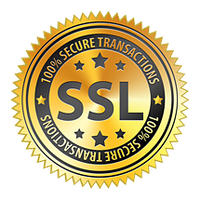Weather is a huge part of winter sports and snowboarding. This snowboard tutorial will go over Tips to Respond to Winter Weather. I watch the weather and plan my snowboard day according to the weather. Other Snowboard Videos on YouTube & Flowing Freeride teach how to pick the right snowboard gear best for you and drills to improve your skills. You’ll have access to all our snowboard tutorials when you sign up that cover every step and feedback from your coach. We also have some free snowboard videos to prepare for snowboard safety on our YouTube Page. I recommend watching these snowboard videos; Beginner Snowboard Lesson on Steering, Toeside Heelside Stance, Learn How To Ride The Lifts Safely, How to Snowboard: Balance Twist, Beginner Snowboard Stance, Snowboard Pads, Snowboard Training Hill, Demo Boards, Snowboard Camber, Building Rhythm, Snowboard Freestyle Boards, Snowboard Dynamic Flex & Extend, How To Size Your Snowboard.Responsibility Code #1, Snowboard Responsibility Code #2, Snowboard Responsibility Code #3, Responsibility Code #4 Look Uphill, Snowboard Responsibility Code # 5, #6 Obey All Signs, Snowboard Responsibility Code #7, Funnel Turns For Navigating Obstacles & Snowboarding Moguls.
Respond to weather by being prepared. It’s a good idea to look at the weather conditions and the temperatures this way you know what to expect. It’s easier to take layers off than to put layers on. If it’s a cold day bring a few extra layers. If it starts getting too warm for you, you can start layering them off. If it’s a cold day and you don’t have more layers you’re kind of out of luck. You might miss some epic runs if you’re in the lodge warming up during a cold day or in blizzard conditions. I love snowboarding in a blizzard because every run I get freshies and there is a ton of powder!
The snow reflects the Sun Rays 10 times so you can really get sunburned out there. You want to have the proper protection for your skin by wearing waterproof clothing or snowboard pants and a coat. A lot of people don’t think about their eyes. They can get sun burned or wind burned by the elements. It’s a great idea to have some type of eye protection like goggles or sunglasses when you’re out on the mountain. You’ll enjoy snowboarding much more if you don’t injure yourself by not having the proper equipment.
A lot of snowboard and ski clothes have vents. You can open your vents to cool you off if you’re getting too hot. Most vents are going to be under your arms on your jackets or between your legs on snowboard pants. Your head is where you lose the most heat. I always recommend that you keep your helmet on while riding. If it’s too hot, stop, pull off the side of the run where you can be seen from above and do not obstruct the trail. You’ll cool down much quicker if you take your hat or helmet off. It’s best if you can just get to the chairlift and take your helmet or hat off on the chairlift ride up.
Have waterproof gloves or mitten on cold days. Mittens will keep your hands warmer and gloves cooler. I wear spring gloves or pipe gloves when the weather is warm. You can get ice burns if you don’t wear them so have lighter gloves and hotter days. If you want to ride better and learn more snowboard weather tips, sign up for a lesson with me and use my online school to get you to Ride Right™! Get Hooked On Snowboarding with Snowboardclass/Flowing Freeride’s techniques by going back to other snowboard videos that teach how to improve your skills, improve your knowledge on equipment, safety, terrain and weather. You can sign up for the full course to gain access to all of our snowboard lessons, study guides, textbooks, glossary, tests and direct feedback from your coach. Learn to snowboard online with flowingfreeride.com and take a look at our YouTube Page for more free content and learn to snowboard right! My name is Blake Tholen Clark Contact Me if you want to book a lesson or have any questions about Snowboarding.


